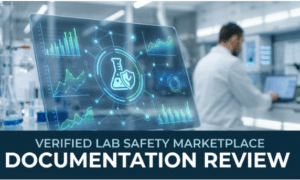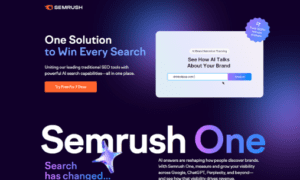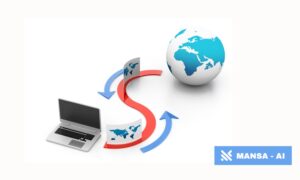In an era marked by digital acceleration, businesses are being pushed to reimagine how they operate. Manual workflows, siloed departments, and legacy systems are being replaced by agile, data-driven ecosystems powered by artificial intelligence (AI). At the heart of this transformation is hyperautomation—a cutting-edge approach that combines multiple technologies to streamline, optimize, and elevate business processes to unprecedented levels of efficiency and intelligence.
Hyperautomation is not just automation on steroids; it’s a comprehensive strategy that uses AI, machine learning, robotic process automation (RPA), and advanced analytics to automate virtually every repetitive, rule-based task across an organization. It’s reshaping how companies approach work, unlocking new value, and creating a competitive edge in an increasingly automated world.
What Is Hyperautomation?
Hyperautomation refers to the orchestrated use of advanced technologies—like AI, RPA, natural language processing (NLP), process mining, and low-code platforms—to automate complex business processes end-to-end. Unlike traditional automation that focuses on individual tasks, hyperautomation aims to integrate systems, data, and workflows into a seamless and intelligent operation.
For instance, a company may use RPA bots to extract data from emails, AI models to classify it, and analytics tools to forecast trends—all in real-time. This automation stack doesn’t just reduce human workload; it enables new capabilities like predictive decision-making, continuous process optimization, and enhanced customer experiences.
If you’re interested in how such transformations are shaping modern business, platforms like Riproar offer insights into digital innovation, AI trends, and practical use cases for entrepreneurs and enterprises alike.
Why Hyperautomation Matters Now
The rise of remote work, pressure for cost efficiency, and growing customer expectations have created the perfect storm for hyperautomation to flourish. Businesses can no longer afford inefficiencies caused by manual or outdated systems.
Some key drivers of hyperautomation include:
- Workforce Augmentation: Employees are freed from mundane tasks and can focus on high-value, creative, or strategic work.
- Real-Time Decision Making: Data collected and processed by AI systems supports faster and smarter decisions.
- Scalability: Businesses can scale operations without proportionately increasing overhead.
- Customer Expectations: Hyperautomation improves response times and personalization, enhancing user satisfaction.
Organizations adopting hyperautomation are not just cutting costs—they are creating more adaptive and intelligent business models.
Core Technologies Behind Hyperautomation
Hyperautomation is not a single tool, but a toolkit. Here are the core components making it possible:
- Robotic Process Automation (RPA): The backbone of automation, RPA mimics human actions to execute repetitive tasks like data entry, invoice processing, or customer onboarding.
- Artificial Intelligence (AI): AI powers cognitive capabilities like understanding language, recognizing images, making predictions, and learning over time.
- Machine Learning (ML): A subset of AI, ML allows systems to improve based on data patterns and feedback without explicit programming.
- Process Mining: This analyzes event logs to understand how processes actually work in practice, revealing bottlenecks and inefficiencies.
- Natural Language Processing (NLP): Enables machines to understand and generate human language, making chatbots and virtual assistants smarter.
- Low-Code/No-Code Platforms: These allow non-technical users to build and customize automation workflows through drag-and-drop interfaces.
Together, these technologies make it possible to automate highly dynamic and unstructured tasks that once seemed out of reach.
Business Use Cases of Hyperautomation
Hyperautomation is already making waves across industries:
- Finance: Automating accounts payable, fraud detection, and financial reporting.
- Healthcare: Streamlining patient records management, scheduling, and diagnostics.
- Retail: Managing supply chains, personalizing marketing, and optimizing inventory.
- Customer Service: Powering intelligent chatbots, ticket routing, and sentiment analysis.
- Manufacturing: Predictive maintenance, quality control, and production planning.
Even traditionally design-centric sectors like architecture are exploring intelligent automation to streamline project management, improve sustainability, and model complex structures more efficiently. Resources like world architectural resource showcase how design thinking and technology now go hand in hand—bridging form and function in the modern era.
These applications not only cut costs and improve accuracy but also open new opportunities for innovation.
Challenges and Considerations
While the benefits are significant, hyperautomation is not without challenges:
- Integration Complexity: Coordinating various tools and legacy systems requires thoughtful planning and IT alignment.
- Data Privacy: Automation processes must adhere to data protection regulations like GDPR or HIPAA.
- Skill Gaps: Employees may need reskilling or upskilling to work alongside intelligent systems.
- Change Management: Resistance to automation and organizational inertia can slow adoption.
Successful implementation demands a clear strategy, executive buy-in, and a culture open to digital transformation.
The Future of Work: AI + Humans
Hyperautomation doesn’t aim to replace humans but rather to elevate them. As machines take over the mundane, humans are freed to engage in creative problem-solving, innovation, and strategic thinking.
This shift also redefines job roles. We’re already seeing new positions emerge—like automation architects, data storytellers, and AI trainers—that didn’t exist a few years ago. The future of work will be less about repetitive execution and more about orchestrating systems and interpreting insights.
Getting Started with Hyperautomation
To embark on a hyperautomation journey, businesses should:
- Identify Automation Candidates: Start with high-volume, rule-based tasks.
- Assess Technological Maturity: Evaluate current infrastructure and gaps.
- Choose the Right Tools: Consider integration capabilities, scalability, and vendor support.
- Start Small, Scale Fast: Pilot initiatives before rolling out across departments.
- Measure and Optimize: Use analytics to continuously refine and improve automation performance.
Companies that approach hyperautomation strategically will lead their industries in agility, innovation, and resilience.
A Seismic Shift
Hyperautomation represents a seismic shift in how work gets done. By fusing artificial intelligence with automation, it empowers businesses to streamline operations, make faster decisions, and deliver superior value. The road to full adoption may be complex, but the rewards are transformative.
Whether you’re a tech startup, SMB, or large enterprise, embracing hyperautomation can give you a vital edge in the AI-powered economy.
Explore Soundproof Hub for more insights on emerging technologies, business innovation, and practical strategies to stay ahead.



































